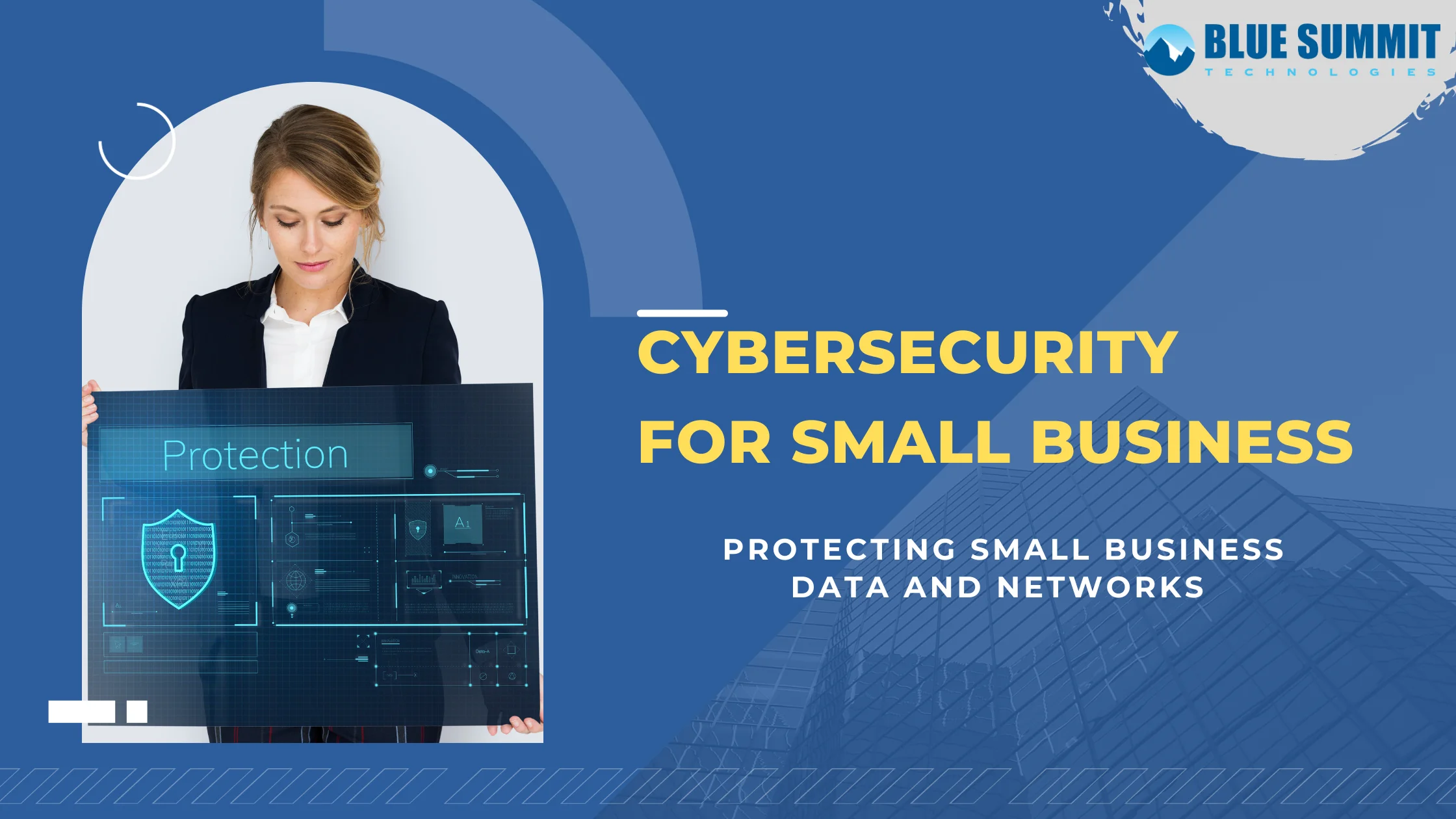
Cybersecurity Basics for Small Businesses & Startups: Your Essential Guide to Digital Protection
In today’s hyper-connected world, digital threats are no longer just a concern for large corporations. Small businesses and startups, often perceived as having fewer resources for robust security, are increasingly becoming prime targets for cybercriminals. The misconception "we’re too small to be noticed" is a dangerous one. In fact, many cyberattacks are automated, casting a wide net that ensnares organizations of all sizes.
A single data breach can cripple a small business, leading to devastating financial losses, reputational damage, legal liabilities, and even closure. But here’s the good news: building a strong cybersecurity foundation doesn’t have to be complex or prohibitively expensive. This comprehensive guide will break down the essentials of cybersecurity for small businesses and startups into easy-to-understand concepts and actionable steps.
Why Small Businesses & Startups Are Prime Targets
You might think hackers only go after big banks or tech giants. Think again. Here’s why your small business is on their radar:
- Valuable Data: Even small businesses handle sensitive information like customer data (names, emails, credit card info), employee records, financial details, and intellectual property. This data is gold to cybercriminals.
- Easier Targets: Smaller organizations often have fewer dedicated IT staff, less robust security infrastructure, and a lower awareness of cyber risks compared to larger enterprises. This makes them easier to exploit.
- Supply Chain Entry Points: Cybercriminals often use small businesses as a "stepping stone" to access larger partners or clients in their supply chain.
- Lack of Resources: Many small businesses operate on tight budgets, leading them to delay or deprioritize cybersecurity investments, making them more vulnerable.
The cost of a data breach for a small business can be astronomical, ranging from fines and legal fees to lost sales and irreparable damage to your brand’s trust. Protecting your digital assets is no longer optional – it’s a fundamental part of doing business.
Understanding Common Cyber Threats
Before we can protect ourselves, we need to know what we’re up against. Here are the most common digital dangers:
-
Malware (Malicious Software)
Malware is a catch-all term for any software designed to harm or exploit your computer system. It comes in many forms:
- Viruses: Attach to legitimate programs and spread when those programs are executed.
- Worms: Self-replicating malware that spreads across networks without human intervention.
- Trojans: Disguise themselves as legitimate software to trick users into installing them, then create backdoors for attackers.
- Spyware: Secretly monitors your computer activity and sends information to third parties.
- Adware: Displays unwanted advertisements, often bundled with free software.
-
Phishing & Social Engineering
These attacks manipulate people into divulging confidential information or performing actions they shouldn’t.
- Phishing: Deceptive emails, messages, or websites designed to trick you into revealing sensitive data (passwords, credit card numbers) or clicking malicious links. They often impersonate trusted entities like banks, service providers, or even your colleagues.
- Spear Phishing: A more targeted phishing attack, customized for a specific individual or organization, making it harder to detect.
- Whaling: A type of spear phishing aimed at high-profile individuals (e.g., CEOs) to gain access to critical company assets.
- Smishing (SMS Phishing): Phishing attempts delivered via text messages.
- Vishing (Voice Phishing): Phishing attempts conducted over the phone.
-
Ransomware
A particularly nasty type of malware that encrypts your files or locks you out of your computer system, demanding a ransom (usually in cryptocurrency) for their release. Even if you pay, there’s no guarantee your data will be restored.
-
Insider Threats
Not all threats come from outside. Insider threats involve current or former employees, contractors, or business partners who have access to your systems and intentionally or unintentionally misuse that access. This could be anything from accidentally deleting critical data to maliciously stealing customer lists.
-
Denial of Service (DoS/DDoS) Attacks
These attacks flood a system, server, or network with traffic to overwhelm it, making it unavailable to legitimate users. While less common for direct small business targeting, they can impact your website or online services.
The Core Pillars of Small Business Cybersecurity
Building a strong defense doesn’t require a massive budget, but it does require a commitment to fundamental practices. Here are the essential pillars:
1. Strong Passwords & Multi-Factor Authentication (MFA)
This is the frontline defense for almost all your online accounts.
-
Strong Passwords:
- Length is Key: Aim for at least 12-16 characters. Longer is better.
- Complexity: Use a mix of uppercase and lowercase letters, numbers, and symbols.
- Uniqueness: Never reuse passwords across different accounts. If one account is breached, all others are vulnerable.
- Password Managers: Use a reputable password manager (e.g., LastPass, 1Password, Bitwarden) to generate, store, and auto-fill complex, unique passwords for all your services. This is a game-changer for security and convenience.
-
Multi-Factor Authentication (MFA):
MFA adds an extra layer of security beyond just a password. Even if a cybercriminal steals your password, they still need the second factor to gain access.- How it Works: After entering your password, you’re prompted for another piece of information, such as:
- A code sent to your phone (SMS or authenticator app like Google Authenticator, Authy).
- A fingerprint scan.
- Facial recognition.
- A physical security key (like YubiKey).
- Enable MFA Everywhere: Enable MFA on all critical accounts: email, banking, cloud services (Google Workspace, Microsoft 365), social media, and any business applications. This is perhaps the single most impactful security step you can take.
- How it Works: After entering your password, you’re prompted for another piece of information, such as:
2. Regular Software Updates & Patch Management
Software developers constantly find and fix security weaknesses (vulnerabilities). These fixes are released as "patches" or "updates."
- Why It’s Critical: Cybercriminals actively look for unpatched vulnerabilities to exploit. If your software isn’t updated, you’re leaving the door wide open.
- What to Update:
- Operating Systems: Windows, macOS, Linux, iOS, Android. Enable automatic updates.
- Web Browsers: Chrome, Firefox, Edge, Safari.
- Applications: Microsoft Office, Adobe products, business-specific software, antivirus programs.
- Firmware: For routers, network devices, and other hardware.
- Best Practice: Enable automatic updates whenever possible. For critical business applications, test updates in a non-production environment first if feasible, but don’t delay patching for too long.
3. Employee Training & Awareness
Your employees are your strongest defense or your weakest link. Human error is a leading cause of data breaches.
- Educate Everyone: Conduct regular, mandatory cybersecurity awareness training for all employees, from new hires to senior management.
- Recognizing Phishing: Teach them how to spot suspicious emails, links, and attachments. Provide examples.
- Password Best Practices: Reinforce the importance of strong, unique passwords and MFA.
- Safe Browsing Habits: Warn against clicking pop-ups, downloading from untrusted sources, or visiting suspicious websites.
- Data Handling: Train on how to properly handle sensitive company and customer data (e.g., not sharing via insecure channels).
- Reporting Incidents: Establish a clear process for reporting suspicious emails, unusual system behavior, or potential security incidents immediately.
- Simulated Phishing Attacks: Periodically send fake phishing emails to test your employees’ awareness. Use these as teaching moments, not punitive measures.
4. Data Backup & Recovery
Despite your best efforts, breaches, hardware failures, or natural disasters can happen. Data backups are your safety net.
- The 3-2-1 Rule: A widely accepted best practice for backups:
- 3 copies of your data: The original and two backups.
- 2 different media types: Store backups on at least two different types of storage (e.g., internal hard drive and external SSD, or local server and cloud storage).
- 1 offsite copy: Keep at least one backup copy in a different physical location (e.g., cloud storage, an offsite data center, or a physically separate office). This protects against local disasters like fire or flood.
- Automate Backups: Use automated backup solutions to ensure data is regularly saved without manual intervention.
- Test Your Backups: Regularly test your ability to restore data from your backups. A backup that can’t be restored is worthless.
- Critical Data First: Prioritize backing up your most critical business data, customer information, and financial records.
5. Network Security (Firewalls & Wi-Fi)
Your network is the gateway to your digital world. Securing it is paramount.
- Firewalls:
- What they do: A firewall acts as a barrier between your internal network and the internet, controlling incoming and outgoing network traffic based on security rules.
- Router Firewall: Ensure your business router has its firewall enabled and properly configured.
- Software Firewalls: Use the built-in firewalls on your computers (e.g., Windows Defender Firewall, macOS Firewall).
- Secure Your Wi-Fi:
- Strong Encryption: Use WPA2 or, ideally, WPA3 encryption for your Wi-Fi network.
- Unique SSID & Password: Change the default Wi-Fi network name (SSID) and password immediately.
- Separate Guest Network: Create a separate Wi-Fi network for guests, customers, or personal devices. This isolates them from your main business network.
- Disable WPS: Wi-Fi Protected Setup (WPS) can be a security vulnerability; disable it if not necessary.
- VPN (Virtual Private Network): If employees work remotely, encourage or require them to use a VPN to connect to your company’s network. A VPN encrypts their internet connection, protecting data even on insecure public Wi-Fi.
6. Endpoint Protection (Antivirus & Anti-Malware)
"Endpoints" are all the devices connected to your network: desktops, laptops, tablets, smartphones, and servers.
- Antivirus/Anti-Malware Software:
- Install & Keep Updated: Install reputable antivirus/anti-malware software on all company devices. Ensure it’s always running and configured for automatic updates and scans.
- Beyond Traditional AV: Look for solutions that offer more advanced features like real-time protection, behavioral analysis, and exploit prevention, often marketed as Endpoint Detection and Response (EDR) or Next-Gen Antivirus (NGAV).
- Centralized Management: For multiple devices, consider a business-grade endpoint protection solution that allows you to manage security settings and monitor threats from a central dashboard.
7. Secure Cloud Usage
Many small businesses rely on cloud services (Google Workspace, Microsoft 365, Dropbox, QuickBooks Online). While convenient, they also require careful security.
- Shared Responsibility Model: Understand that cloud providers secure their infrastructure (the cloud itself), but you are responsible for securing your data in the cloud (your configurations, access controls, and user practices).
- Strong Passwords & MFA: Crucial for all cloud accounts.
- Access Controls: Limit who can access what data within your cloud services. Use the principle of "least privilege" – give users only the access they need to do their job, no more.
- Regular Audits: Periodically review access permissions and settings in your cloud applications.
- Data Encryption: Ensure data is encrypted both in transit (when being uploaded/downloaded) and at rest (when stored on the cloud provider’s servers). Most major providers do this by default, but confirm.
Building a Basic Cybersecurity Plan for Your Startup
You don’t need a massive security team to start. Here’s how to develop a practical plan:
- Identify Your Assets: What data and systems are most critical to your business? (Customer data, financial records, intellectual property, email system, website).
- Assess Your Risks: Where are your vulnerabilities? (Outdated software, weak passwords, lack of employee training, unsecure Wi-Fi).
- Implement the Core Pillars: Systematically work through the seven pillars outlined above. Start with the easiest and most impactful ones (MFA, password managers, basic training).
- Develop Simple Policies:
- Password Policy: Mandate strong, unique passwords and MFA.
- Acceptable Use Policy: Outline how employees can use company devices and networks.
- Data Handling Policy: Define how sensitive data should be stored, shared, and disposed of.
- Create an Incident Response Plan (Even a Simple One):
- What steps will you take if a breach occurs?
- Who should be contacted? (IT support, legal, customers).
- How will you contain the damage and recover?
- Even a basic checklist can save critical time and minimize damage.
- Regular Review & Improvement: Cybersecurity is not a one-time fix. Threats evolve, and so should your defenses. Schedule quarterly or annual reviews of your security practices.
Affordable & Accessible Cybersecurity Solutions
Being a small business doesn’t mean you’re out of options.
- Leverage Built-in Features: Windows Defender, macOS Gatekeeper, and built-in firewalls offer decent baseline protection.
- Free & Freemium Tools: Many reputable password managers and some antivirus solutions offer free tiers for basic use.
- Cloud Security Features: Your cloud providers (Google Workspace, Microsoft 365) offer robust security features – learn how to use them effectively.
- Managed Service Providers (MSPs): Consider partnering with an MSP that specializes in cybersecurity for small businesses. They can provide expert guidance, implement solutions, and manage your security for a predictable monthly fee, often more cost-effectively than hiring dedicated in-house staff.
- Cybersecurity Insurance: As a last line of defense, explore cybersecurity insurance policies. They can help cover costs associated with data breaches, such as legal fees, notification costs, and public relations.
Conclusion: Your Digital Future Depends On It
Cybersecurity for small businesses and startups isn’t an option; it’s a necessity. While the landscape of threats can seem daunting, by focusing on these fundamental pillars – strong passwords and MFA, regular updates, employee training, robust backups, network security, endpoint protection, and secure cloud usage – you can build a formidable defense without breaking the bank.
Start small, be consistent, and foster a culture of security awareness within your organization. Protecting your digital assets protects your livelihood, your reputation, and your customers’ trust. Don’t wait until it’s too late – begin strengthening your cybersecurity posture today.



Post Comment